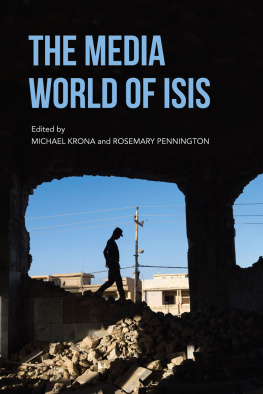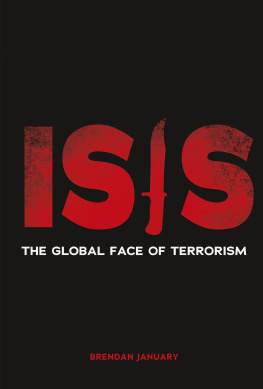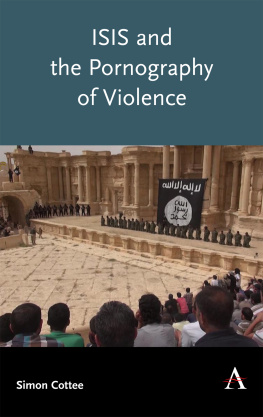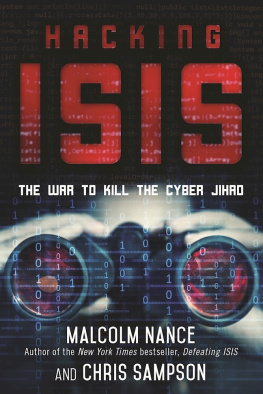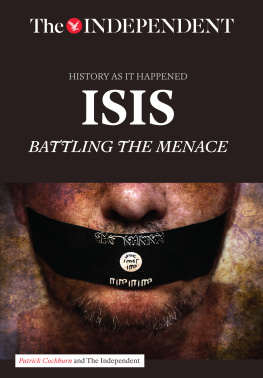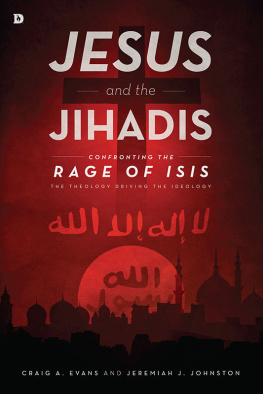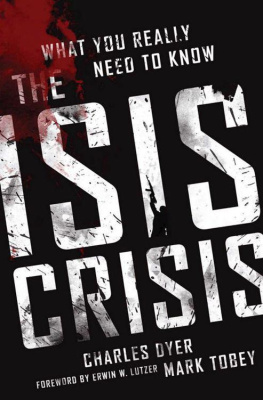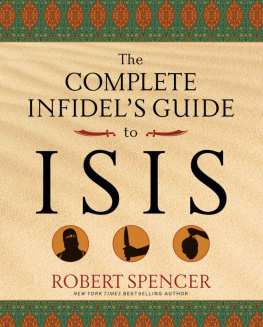THE MEDIA WORLD OF ISIS
INDIANA SERIES IN MIDDLE EAST STUDIES
Mark Tessler, editor
This book is a publication of
Indiana University Press
Office of Scholarly Publishing
Herman B Wells Library 350
1320 East 10th Street
Bloomington, Indiana 47405 USA
iupress.indiana.edu
2019 by Indiana University Press
All rights reserved
No part of this book may be reproduced or utilized in any form or by any means, electronic or mechanical, including photocopying and recording, or by any information storage and retrieval system, without permission in writing from the publisher. The paper used in this publication meets the minimum requirements of the American National Standard for Information SciencesPermanence of Paper for Printed Library Materials, ANSI Z39.48-1992.
Manufactured in the United States of America
Cataloging information is available from the Library of Congress.
ISBN 978-0-253-04591-1 (cloth)
ISBN 978-0-253-04592-8 (paperback)
ISBN 978-0-253-04594-2 (ebook)
1 2 3 4 5 23 22 21 20 19
Contents
T HIS BOOK BEGAN as a conversation between colleagues. A passing remark about a paper being presented about the Islamic State at a conference turned into brainstorming about a possible collaboration and then, finally, became this book. What we so seldom discuss in academia is the way in which so much of our scholarship arises from such interactionsconversations between colleagues, quick exchanges of ideas on Twitter, idle chitchat over drinks at a conference that becomes something more later. Though we often write alone, our work relies on our interactions with othersthrough engagement with literature, yes, but also socially. This book would not exist were it not for those various, often rather small, interactions.
It would also have been impossible without the support of the editors institutions. Miami Universitys Department of Media, Journalism, and Film, and in particular former chair Richard Campbell, helped make this work possible, as did the College of Arts and Science. The School of Arts and Communication at Malm University was also supportive of our work on this book.
The Center for Advanced Research in Global Communication, part of the Annenberg School of Communication at the University of Pennsylvania, also helped midwife this book into being. Through a graduate student research workshop and a symposium on the Islamic State and media, we were able to meet many of the authors included in this volume. This book would not exist were it not for the work and commitment of those contributors. We did not know many of these authors personally before we reached out to them about submitting chapters to the book. We were practically strangers at the interpersonal level, although many of us have read or used each others work in our own research. That these authors trusted us with their scholarship and that they committed to this project when it was still just the kernel of an idea is the only reason we have been able to bring it to life.
Also important to that process are the individuals at Indiana University Press who helped us push through to the end. Editorial director Dee Mortensen, who has been supportive of so much of this work; acquisitions editor Jennika Baines, who is so patient and thoughtful when answering a deluge of emails; former assistant acquisitions editor Kate Schramm, who loves Nancy Drew but who does not look like her; project manager/editor Rachel Rosolina, and so many other individuals working at the press who saw this project through to its finish. Thank you.
No scholar is an island, and we are only able to produce the work we do because of the support of the friends and colleagues cheering us on. Thank you to Indiana University graduate school colleagues Stacie Meihaus Jankowski, Jessica von Ahsen Birthisel, Lori Henson, Spring Serenity Duvall, and Jason Martin for the continual rah-rahing and the laughter. Thank you too to the Mongeese. Thank you to friends and colleagues at Malm University and School of Arts and Communication for keeping up with your sometimes pressured and distracted fellow. You know who you are.
Finally, our families. They put up with the bad moods when the writings not going well, the good moods when everything is clicking, and all the other moods in between. Tim and Sofia Bolda, Rhonda Pennington, as well as close, special, and loved ones in Sweden. Thank you.
Michael Krona
Rosemary Pennington
April 26, 2019
THE MEDIA WORLD OF ISIS
Michael Krona
Rosemary Pennington
I N AUGUST 2014, only weeks after the first rare public appearance by the mythical Abu Bakr al-Baghdadi in the al-Nuri Mosque in Mosul for his initial address to the global Muslim religious community as appointed caliph and leader of ISIS, the now-infamous video showing the beheading of kidnapped US citizen James Foley was released. Titled A Message to America, it was filmed against a desert background, with Foley in an orange jumpsuit, on his knees. Behind Foley stood his black-dressed executioner, his face covered. In English and with a London accent, the executioner, Mohamed Emwazi (who became known as Jihadi John) spoke directly into the camera, arguing for why Foley needed to die. Foley himself was forced to read a scripted statement blaming the US government for his fate. The video then ended with his beheading.
As a marketing product, the video went viral and reached a global audience.
As propaganda, the video had a clear message and was a wake-up call for many governments.
As a mediation of torture, the video was unfortunately only evidence of what would follow.
Even though such videos have long been produced by other organizations, this particular video clearly illustrated a deliberate strategy of mediation by ISISa strategy that aimed to gain global attention through the theatrical beheading of a Westerner and to simultaneously convey the message of the organization as a global phenomenon itself. This was only highlighted by using a man brought up in the UK and speaking English as Foleys executioner.
Mediating Terror
The theater of terror, the desire among terrorist organizations for public exposure and maximum marketing value, is of great importance for ISIS. This does not make them unique in any way; however, their ability and success in communicating what is now one of the most recognized brands in not only the internal jihadosphere but in the entire world separates them from both previous and present groups. Its predecessor, and the organization from which the ISIS of today was born, al-Qaeda, made this strategy of terror through global exposure all too visible with the horrific yet theatrical attacks in New York and Washington on September 11, 2001. Happening in real time in front of a global audience, witnessed in television news coverage and reproduced through various visual media for years to come, the attacks on the World Trade Center and Pentagon were orchestrated with a clear marketing strategy. Since then, the development of new and innovative communication technologies has altered the media pretext and conditions for terrorist organizations. What ISIS has done is to adapt to this new media reality, balancing the need for global exposure with a propaganda strategy implemented to target specific audiences with certain messages, characterized by not only depictions of attacks on enemies but also through communication and positive narratives about the organization itself.
If we were to ask a random person on the street in basically any Western country about what ISIS is and stands for, the answer would most certainly refer to the type of violence, executions, and brutality exemplified by the video of James Foley. As true as that association would be, the media world of ISIS, in particular after the declaration of the caliphate on June 29, 2014, has expanded into a virtual universe with particles that go far beyond this depicted brutality. Producing a plethora of propaganda narrativesincluding stories about the peaceful and just caliphate, featuring happy children, a functioning state and welfare system as well as the eulogization of martyrs, and discussion of the religious tenets and political history justifying their actionsISISs media industry has continuously managed to produce and communicate stories designed to appeal to a global audience. The products of this industry have helped attract tens of thousands of foreign fighters to join the so-called state, helped inspire attacks around the world, produced fear in many communities, and provoked military reactions from adversariesmaking the media world of ISIS a highly relevant object of study. This is particularly so as ISISs media apparatus has seemed to influence other groups who are currently mimicking and learning from the ways ISIS has used its strong propaganda machinery to increase exposure, recruitment, identity building, and territorial expansion. For instance, since the entrance of ISIS on the global stage of terrorism, the groups main rival al-Qaedas central and regional branches have refined and increased their media propaganda distribution, with a specific focus on international audiences.

